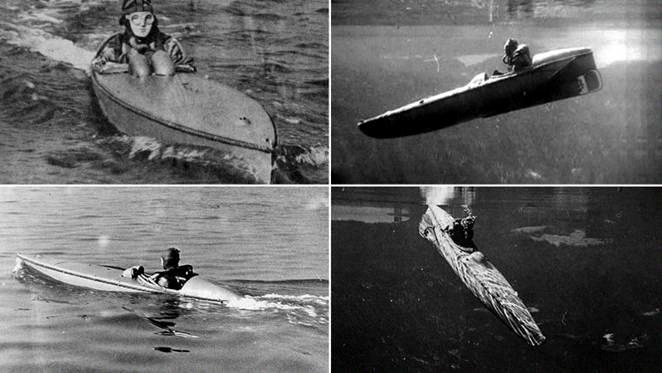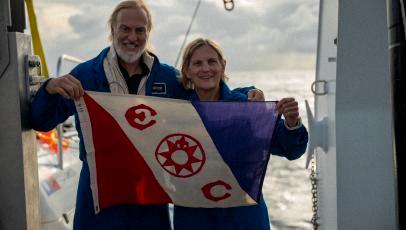Mount Everest is the highest peak in the world, standing tall at 29,029 feet above sea level. It is a challenging climb that many mountaineers aspire to conquer. However, with great heights come great risks and Mount Everest has tragically claimed the lives of many climbers over the years. The mountain is littered with the remains of those who dared to attempt the climb and failed.
One of the most famous stories of a deceased climber on Mount Everest is that of Francys Arsentiev, also known as the Sleeping Beauty. Francys was an American climber who attempted to summit Mount Everest in 1998 with her husband, Sergei Arsentiev. They were both experienced climbers, but unfortunately, things did not go as planned.
Francys and Sergei encountered difficult and chaotic weather during their climb, and they became separated. Francys was unable to continue her ascent and ended up becoming stranded at an altitude of 27,000 feet. She was left without oxygen and unable to move, and her husband was unable to locate her.
Ian Woodall and Cathy O’Dowd, who were also climbing to the summit, came across Francys and attempted to assist her. However, the weather was too severe and they were unable to do so. Tragically, Francys passed away shortly after they found her.
Sergei, on the other hand, was successful in reaching the summit, but lost his life on the descent. He fell off a cliff while attempting to find his wife.
Francys’ body remained on the mountain for several years, earning her the nickname Sleeping Beauty. Her body became a landmark on the mountain and was often used as a reference point by climbers.
In addition to Francys, there are several other deceased climbers on Mount Everest. Some have been there for many years, while others are more recent. The mountain’s extreme conditions make it difficult to retrieve bodies, and many remain on the mountain, frozen in time.
While Mount Everest is a symbol of human achievement, it is also a reminder of the dangers that come with pushing oneelf to the limit. The deaths of climbers like Francys Arsentiev serve as a solemn reminder of the risks associated with mountaineering.
Mount Everest is a beautiful and challenging mountain that has claimed the lives of many climbers. The story of the Sleeping Beauty is just one of the many tragic tales associated with the mountain. While it is important to remember the risks, it is also important to honor those who have attempted the climb and lost their lives.
The Persistence of Mount Everest’s Sleeping Beauty
Mount Everest Sleeping Beauty is still there. Everest Sleeping Beauty, also known as Irina Sen, was a Russian climber who died on Mount Everest in 2018. Her body remains on the mountain, along with the bodies of many other climbers who have lost their lives attempting to summit the world’s tallest peak. Due to the extreme altitude and harsh weather conditions, it is dangerous and difficult to retrieve bodies from Mount Everest. As a result, many climbers who die on the mountain are left there as a somber reminder of the risks and challenges of attempting such a feat.
Source: issuu.com
The Identity of the Hanging Body on Everest
The hanging body on Everest is a climber who has been gien the nickname “Green Boots.” The body has been a landmark for climbers on the main Northeast ridge route of Mount Everest for many years. While the body has not been officially identified, it is believed to be that of Tsewang Paljor, an Indian climber who died on the mountain in 1996. The body is located in a cave-like feature near the summit, and is visible to climbers on their way up the mountain. While some climbers find the sight of the body disturbing, others see it as a reminder of the dangers of climbing at such high altitudes. Despite efforts to remove the body, it remains in place as it is too dangerous to retrieve.
Exploring the Identity of Sleeping Beauty on Mount Everest
Francys Arsentiev, also kown as the Sleeping Beauty of Mount Everest, was an American climber who attempted to reach the summit of Mount Everest without supplementary oxygen in 1998. She became famous for the tragedy that befell her during her descent. Arsentiev and her climbing partner, Sergei Arsentiev, both experienced severe altitude sickness and exhaustion on their way down from the summit. In a desperate attempt to save her husband’s life, Arsentiev unclipped herself from the safety rope and attempted to descend on her own, but she eventually collapsed and fell unconscious. Despite the efforts of other climbers to rescue her, including Ian Woodall and Cathy O’Dowd, she died on the mountain. Her body remained on Everest for many years until it was finally recovered in 2007. The story of the Sleeping Beauty of Mount Everest is a tragic reminder of the dangers of high-altitude climbing and the importance of safety precautions.
Climbing Mount Everest: Experiences of the Dead and the Living
There are dead bodies on Mount Everest. Over the years, many climbers have lost their lives attempting to climb the world’s highest peak, and their bodies remain on the mountain. Some of tese bodies have been there for decades, while others may have only recently perished. As climbers make their way up the mountain, they may come across these bodies, which can be a sobering reminder of the risks involved in such a dangerous undertaking. In some cases, these bodies are left where they are due to the difficulty involved in removing them, while others have been recovered and taken down the mountain. While seeing a dead body on Everest is a tragic sight, it does serve as a reminder of the importance of safety and preparation when attempting such a challenging climb.
The Loneliest Mountaineer on Mount Everest
The loneliest mountaineer on Everest is currently Jost Kobusch, a German climber who is attempting to climb the world’s tallest mountain during the dead of winter, a season when almost nobody dares to scale it. Kobusch is the only climber on the mountain at the moment and is carrying only one backpack. His solo journey is undoubtedly an incredibly challenging and dangerous one, highlighting his immense courage and determination.
Source: aopa.org
Number of Unfound Bodies on Mount Everest
It is difficult to provide an exact number of unfound bodies on Mount Everest, as many climbers who perished on the mountain may never be discovered or identified. However, it is estimated that there are dozens of bodies that remain missing, lost forever in the harsh and unforgiving environment of the mountain. Despite efforts by search and rescue teams, many of thse individuals may have fallen into crevasses or been swept away by avalanches, making it nearly impossible to locate their remains. The harsh conditions of the mountain also mean that bodies can become buried in snow or ice, further complicating recovery efforts. While the exact number of unfound bodies on Everest may never be known, it is a sobering reminder of the dangers and risks that come with attempting to climb the world’s tallest peak.
The Age of the Oldest Dead Body Found on Mount Everest
The oldest known body to have been found on Mount Everest is that of George Mallory. His body was discovered in 1999, almost 75 years after his death in 1924. Mallory was a British mountaineer who attempted to climb Everest and was last seen just 800 feet from the summit. His disappearance had remained a mystery for decades until his body was found by a team of climbers. The discovery was made possible due to a warm spring that caused the snow to melt, revealing the remains. Mallory’s body has sice been a subject of much interest and speculation, with many trying to determine whether he had actually reached the summit before his death.
The Most Famous Dead Body on Mount Everest
The most famous dead body on Everest is commonly kown as “Green Boots”, which is the nickname given to Tsewang Paljor, an Indian climber and constable with the Indo-Tibetan Border Police. Paljor’s body has become a recognizable landmark on the mountain and is located in a prominent spot on the main climbing route to the summit. The nickname “Green Boots” comes from the green mountaineering boots that Paljor was wearing when he died. His body is believed to have been there since 1996, when he was caught in a deadly blizzard known as the “1996 Everest disaster”. Despite the high number of fatalities on Everest, Green Boots has become the most famous of all the dead bodies on the mountain, and his presence has become a sobering reminder of the risks and dangers that come with climbing the world’s highest peak.
Leaving Bodies on Mount Everest
There are several reasons why bodies are soetimes left on Everest. Firstly, the extreme altitude and harsh weather conditions on the mountain make it difficult and dangerous to retrieve bodies. The cost of repatriation, which can amount to tens of thousands of dollars, is also a major factor. In some cases, families may not be able to afford the cost of retrieving the body. Additionally, some climbers choose to leave the bodies of fellow climbers on the mountain as a sign of respect and remembrance. in certain cases, it may be impossible to retrieve a body due to its location or condition. Despite the challenges and ethical concerns surrounding the issue, leaving bodies on Everest remains a reality for many climbers and their families.
Source: silvercrestsubmarines.co.uk
Showering on Mount Everest
On the Everest Base Camp trek, there are several places where you can take a shower. Most of the guesthouses and tea houses along the trail have a shower facility. However, it is essential to keep in mind that the showers use solar power to heat the water, so the availability of hot water can be unpredictable, especially on cloudy days.
To take a shower, you need to inform the guesthouse owner or manager that you want to use the shower. They will provide you with a bucket or a mug to scoop water from the overhead tank. The water is usualy cold, but you can warm it up by leaving it out in the sun for a while.
Once you have your water, you can either take a shower in a designated shower room or use the outdoor shower if available. The shower rooms are usually small, and you need to be careful not to wet the entire room. Outdoor showers, on the other hand, provide more privacy and an opportunity to enjoy the stunning views of the surrounding mountains.
It is also essential to bring your own toiletries, including soap, shampoo, and a towel, as the guesthouses do not provide them. Additionally, it is recommended to take quick showers to conserve water, as water is scarce and needs to be conserved on the trek.
Surviving in the Death Zone: How Long Can You Last?
The death zone, which is the area above 8,000 meters (26,247 feet) on Mount Everest, is known for its extreme altitude and harsh weather conditions. People are advised not to stay in this zone for more than 16 to 20 hours. This is because the thin air in the death zone makes it difficult for the human body to absorb oxygen, leading to altitude sickness, cerebral and pulmonary edema, and eventually, death. The lack of oxygen in the death zone can also caue frostbite, hypothermia, and other cold-related injuries. It is important to note that even with supplemental oxygen, the human body can only acclimatize to a certain extent in the death zone. Therefore, climbers and mountaineers need to be aware of the risks involved in staying in the death zone for an extended period of time and should plan their ascent accordingly.
The Effects of Death Zone Conditions on the Human Body on Mount Everest
The death zone on Mount Everest is a region above 26,000 feet where the air is so thin that the body’s cells start to die due to lack of oxygen. This can lead to a range of potentially fatal health conditions. Climbers in the death zone may experience heart attacks, strokes, or severe altitude sickness due to the low atmospheric pressure. Additionally, judgement may become impaired, making it more difficult for climbers to make sound decisions and navigate safely. the death zone is a treacherous environment that poses significant risks to climbers attempting to summit Mount Everest.
The Mountain With the Most Deaths
The mountain that has the most deaths is Annapurna I, located in Nepal. This mountain has a particularly deadly route due to an extremely steep face, which has claimed the lives of many climbers. Surprisingly, out of the 158 attempts to ascend this peak, 58 people have lost their lives, giving it the highest fatality rate of any ascent in the world. Therefore, Annapurna I is considered to be the deadliest mountain in the world.
Source: discovery.com
Conclusion
Mount Everest is a majestic, yet dangerous mountain that has claimed the lives of many climbers over the years. It stands at an impressive height of 29,029 feet, making it the tallest mountain in the world. Despite its beauty and allure, the climb to the summit is not for the faint of heart, and requires rigorous training and preparation. The weather conditions can be unpredictable and treacherous, as evidenced by the tragic stories of climbers who have lost their lives on the mountain. Yet, for tose who successfully summit Everest, it is a remarkable achievement and a testament to human endurance and perseverance. Mount Everest is a symbol of the human spirit, pushing us to push beyond our limits and reach for the highest peaks.




